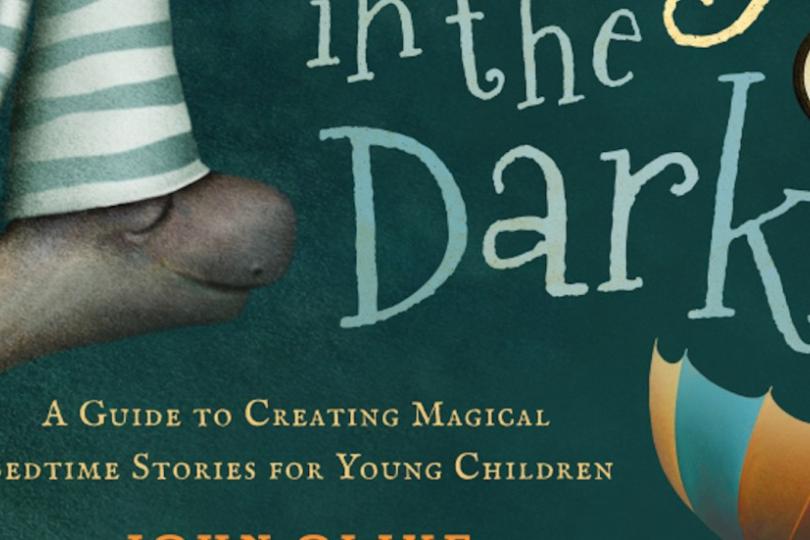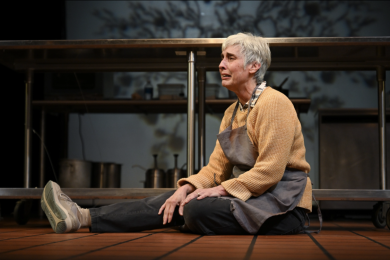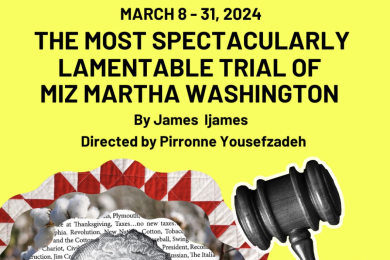Theater for one
Review

While veteran playwright and theater instructor John Olive’s Tell Me a Story in the Dark isn’t explicitly a manual for applying theater techniques to daily life, his guide to telling bedtime stories to small children can’t help but pull heavily from Olive’s artistic experience. Telling a story, especially one for children, is essentially acting for an audience of one, and it’s evident that Olive puts a lot of stock in the presentation of these stories. It’s one of those subtle areas of life where arts training proves to be an invaluable asset. That theatricality ultimately works both for and against the book, although in different ways than you might expect.
Of course, the first criticism a layperson might level against something like Tell Me a Story in the Dark is that a how-to for something like telling bedtime stories to kids just feels unnecessary. It’s something most families do anyway (or at least most families who are likely to read a book on the subject) and there’s no objectively wrong way of doing it, short of maybe recounting wartime atrocities or Penthouse Forum letters. Olive is ready to address that criticism preemptively, dedicating an early chapter to “A Story in the Dark Why-To.” As he runs through arguments from harnessing the power of language to combatting the ubiquity of glowing screens to helping children make sense of the world on their own terms, the tone starts to feel a little defensive, as though the book exists at least partially to justify its own existence.
But it’s clear that Olive fully believes in his book’s necessity, which injects the whole thing with the lively energy of a true believer working hard to spread an obscure gospel. And as with any gospel, there are cut-and-dried rules. Part of the reason that a topic as seemingly abstract as bedtime stories merits an entire book is that there are important steps to take and concepts to remember throughout your storytelling journey. Those rules include never memorizing your story, always telling stories with the lights out and being physically close to your audience, among others. Don’t assume that Tell Me a Story in the Dark is a general overview of storytelling. This is very much “Telling Stories the John Olive Way.” At its best, that approach does a fine job of recreating the particular thrill of listening to a well told story just before the drowsiness overtakes you. At its worst, it feels a little like sitting through an overzealous infomercial.
From Nonsense Stories to Myths and Legends
The strongest facet of Olive’s book is, as it should be, the stories themselves. He’s assembled quite a roster of stories from all sorts of genres and sources, reproduced more or less as Olive would tell them. The fields range from Nonsense Stories to Myths and Legends to Personal Stories. The re-tellings of both familiar tales and Olive’s own originals are vivid, lively and noticeably theatrical, which helps demonstrate what sets them apart from reading the same stories out of a book. Olive’s telling of the myth of Prometheus, for instance, is delivered with the understanding that some small children may not fully embrace a story that ends with the hero being horrifically tortured by an eagle for all eternity. Olive proposes not sweating the details and instead focusing on making the story lively, detail-rich and full of kid-friendly action and dialogue.Back to the cave: Prometheus ran inside, dripping wet, with more wood. He dropped to his knees and carefully put the wood on the fire. At first, it hissed because it was wet. Sssssssss. But then it caught. Flames danced upwards. Heracles heaved a sigh of relief. Whew. The fire was saved. The sky: “You can’t undo what I’ve done.” Prometheus pointed out. “I’m a god, and whatever a god does stands. Ha.” “Arrrrrrgh!” And now, a cloud began twisting and spinning, turning itself into a huge hand, a Zeus-hand. As soon as the hand grasped him, Prometheus turned back into Prometheus. Writhing and squirming, he stammered, “What, what are you going to do? Where are you going to take me?” The hand lifted Prometheus away, away into the clouds.The apocryphal story of George Washington and the cherry tree, on the other hand, becomes a showcase for smaller action, internal dialogue and exploring the line between truth and legend. Olive leans heavily on the theatricality of the narrative with sound effects and sensory imagery, an approach that makes perfect sense for a lights-out story session.
You know what he did? He chopped down one of the young cherry trees. Chop, chop, chop. Wham, wham, wham. Bang, bang, bang. It felt really good! To feel that sharp hatchet clad biting into the wood. The way it smelled, the way pieces of the tree flew off. And the noise when it fell: whooooooo-BOOM. Uh-oh. George looked at the fallen tree and remembered: these cherries were his father’s favorites. What have I done? What am I gonna do? Oh no! George ran off to the barn. I’ll, I’ll say it wasn’t me. I’ll blame it on one of the farm hands, yeah. I’ll swear up and down that it wasn’t me. He stayed in the barn all morning, telling himself that he’d blame one of the slaves.While many of Olive’s examples are intended to give direction on how to adapt an existing narrative, he also provides some instances of his own creations, including the first story-in-the-dark he told his own son. In these pieces, Olive stresses the improvisational nature of his approach, reminding the reader that a big part of the process is trusting your own voice and letting your stories take their own shape.
This story happens in one of those modern housing developments at the very edge of the city. You know: cheap houses and no trees. Parks where nobody goes. At the edge of the development is a cornfield. Beyond that, a valley, filled with trees. And an old rundown house. This story’s about a guy named . . . Chuck. Chuck? Sure, why not? Chuck. And one day, Chuck leaves his air-conditioned house and heads out across the cornfield.All of these stories are presented to serve mainly as examples, since memorizing and reading are both forbidden by the Olive method. Your mileage may vary on your response to Olive’s authorial voice, which is very prevalent in all of the tales. It shouldn’t be that big a hang-up, since the idea of the book is to teach you to tell your own stories, but if his style grates on you it’s going to make it tougher to wade through. (Personally, it took some effort for me to accept Olive’s forceful, emphatic tone, but once I was able to look beneath the surface I found a lot more to like.)




